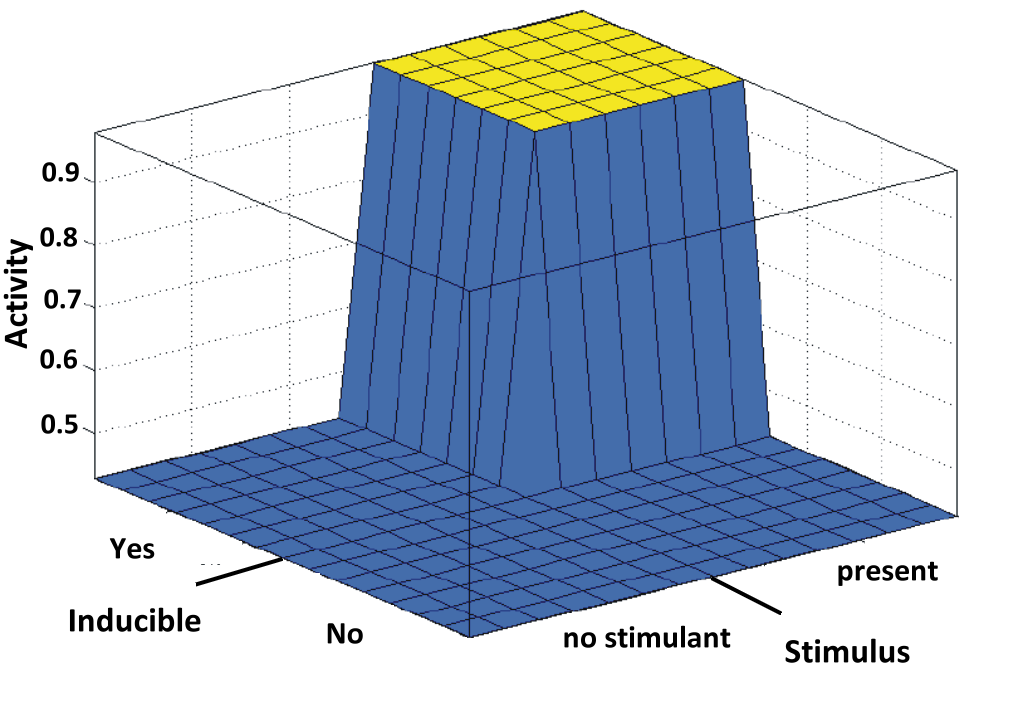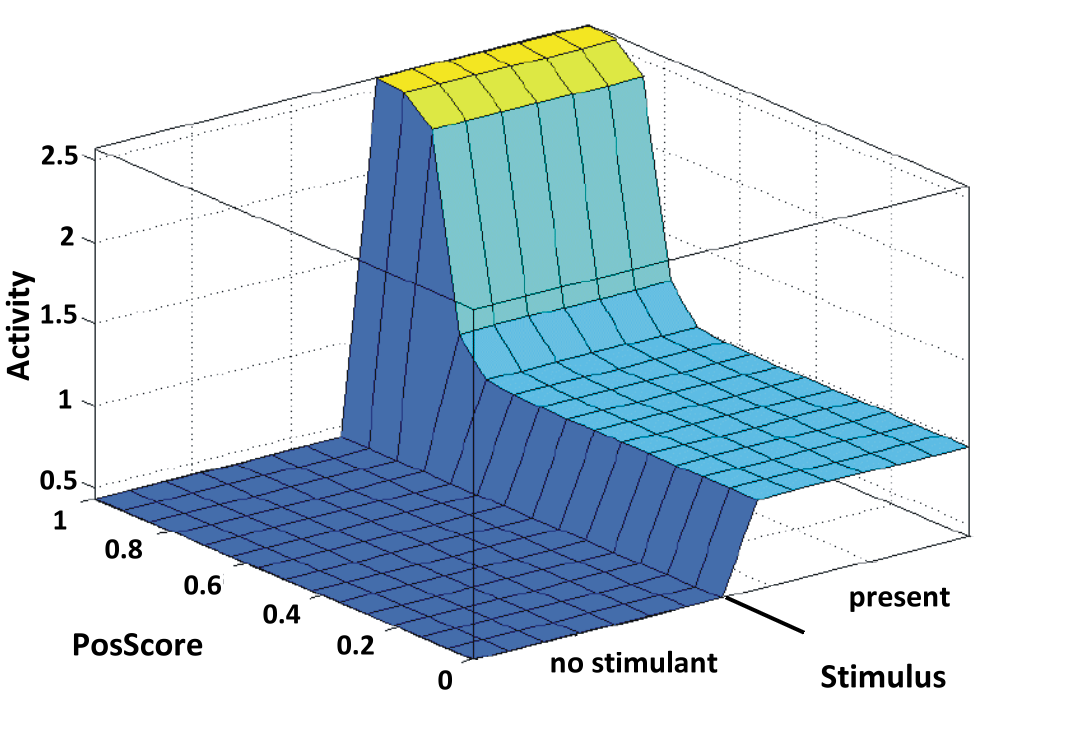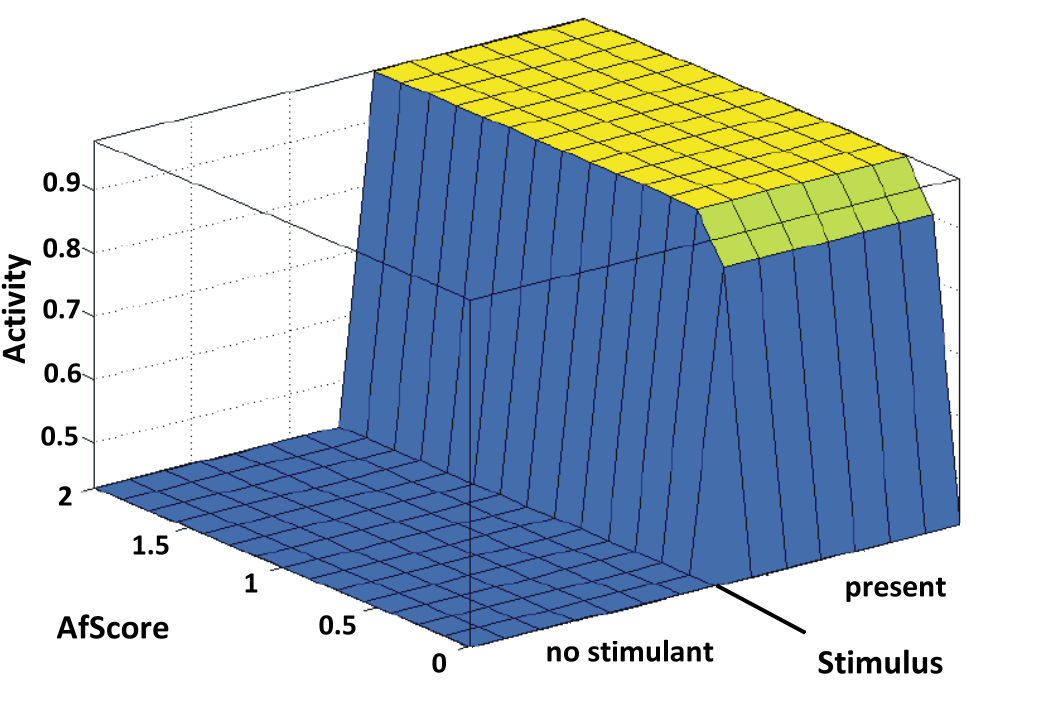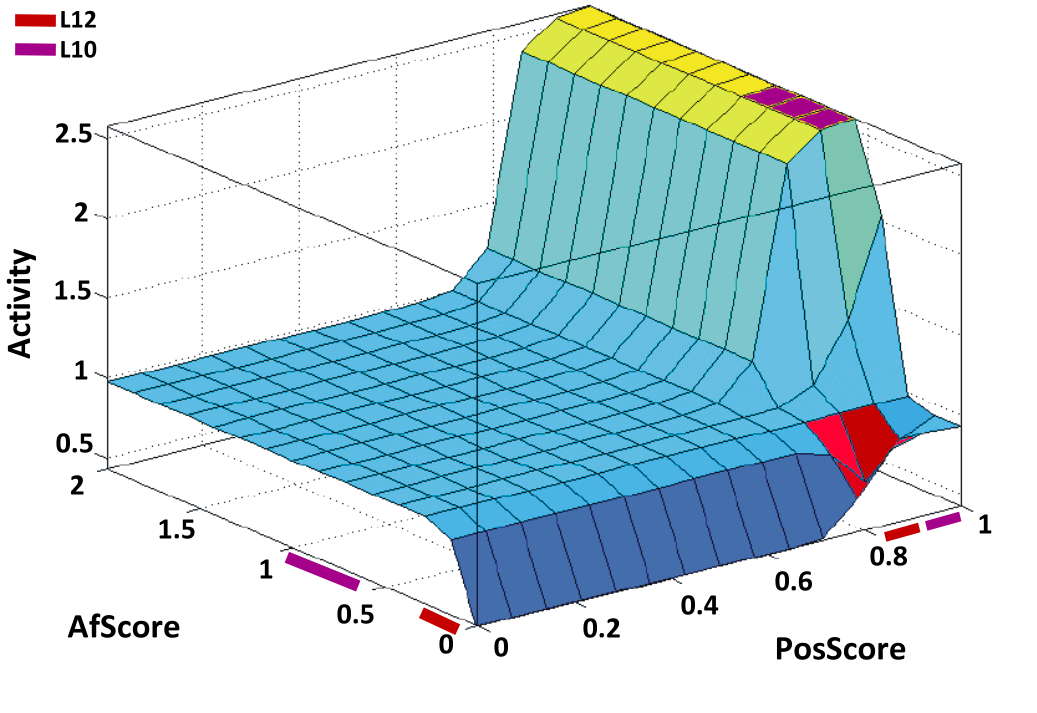Team:Heidelberg/HEARTBEAT network/Results
From 2009.igem.org
Naoiwamoto (Talk | contribs) (→Results) |
Naoiwamoto (Talk | contribs) |
||
| Line 2: | Line 2: | ||
{{Template_HD_3}} | {{Template_HD_3}} | ||
<html><body id="modeling"></body></html> | <html><body id="modeling"></body></html> | ||
| - | |||
{| | {| | ||
|-valign="top" border="0" style="margin-left: 2px;" | |-valign="top" border="0" style="margin-left: 2px;" | ||
Revision as of 17:57, 19 October 2009
HEARTBEAT Fuzzy ModelingResultsModeling inducible promotersBased on prior data analysis of data derived from flow cytometry experiments using inducible synthetic NFkB responsive promoters we developed a fuzzy controller which reflects the behavior of inducible promoters. Fig. 1 shows the activity depending on the stimulus (yes/no) as well as on the type of promoter (inducible/constitutive). By this, high promoter activity is only observed when a promoter is inducible upon stimulation. Fig. 2(a) and (b) show how the position score (PosScore) and affinity score (AfScore) affects promoter activity given an inducible promoter. In this way it is clearly shown that promoter activity is present only if stimulating events occur. Fig. 3 shows the combinatorial effect of PosScore and AfScore for an inducible promoter upon stimulation. An optimal promoter activity is observed for both high position and affinity score.
Our final model of an inducible promoters (Figure: NFkB 1) shows the relationship between stimuli, type of promoter, i.e. inducible, affinity score and position score. The model predicted a high dependency of the promoter activity on affinity score revealing its crucial role (in TF binding). dazu: "position score gives the last small jump" to the promoter to be an optimal promoter. |
 "
"



